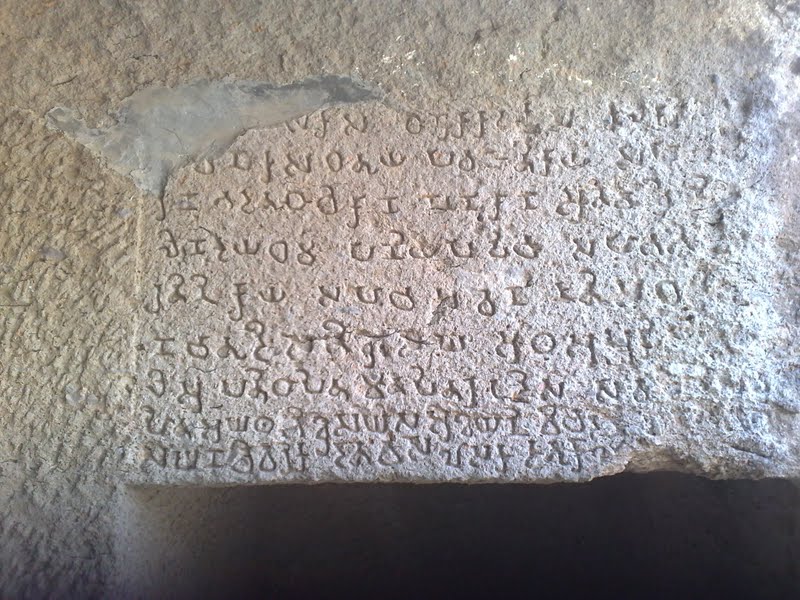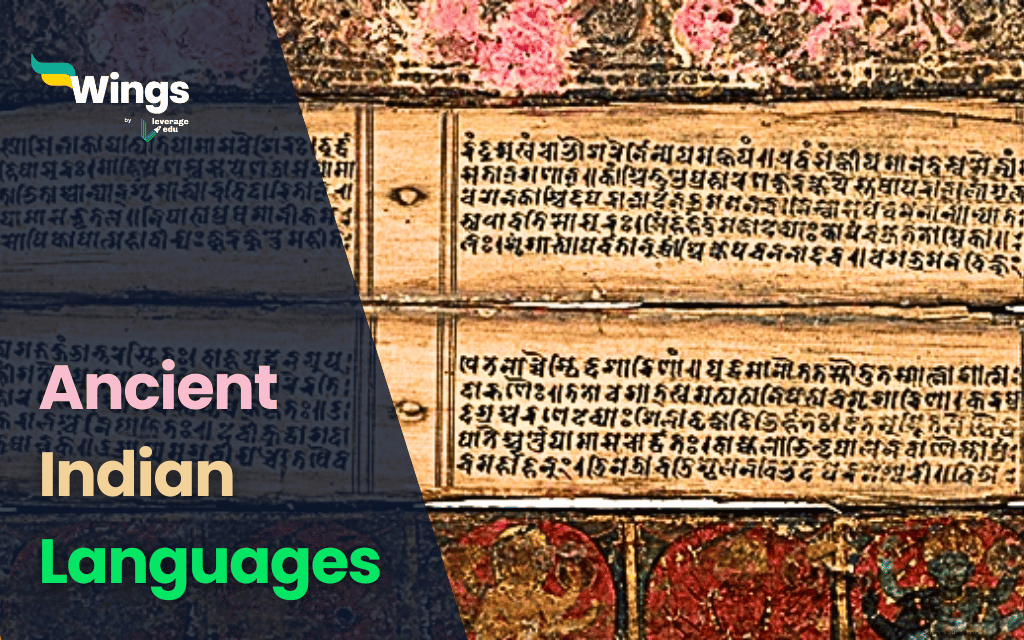Ancient Indian languages are the mothers of modern languages. These languages are classified as ancient because their original texts and vocabulary are not in use anymore and have evolved over time to become common dialects and multiple languages. The diversity of languages we have in India is attributed to these languages. Our history shows these languages are divided into Indo-Aryan and Dravidian. Some communities in states that share borders with different countries also have Austroasiatic and Sino-Tibetan languages as their base languages.
Contents
About the Ancient Languages
A lot of these languages were only oral in the beginning and very little written evidence of such languages. They were used to propagate culture and teachings orally. Here are some features of the same.
- The Indo-Aryan languages are primarily derived from the Indo-European language family. These languages are the basis of the majority of languages in India.
- Indo-Aryan languages are also divided into old, middle and new categories.
- Sanskrit was the most important and dominant language in ancient India.
- The evidence of some languages is very scarce and difficult to categorise in language or script.
- Some of these languages were used during the same time by different communities while others differ from others based on their time period.
Languages of Ancient India
Ancient Indian languages laid the foundation for India’s cultural, literary, and religious evolution. Here’s a simple table to help you understand their timelines, scripts, and how they were used.
| Language | Approximate Era | Script Used | Major Texts / Usage |
|---|---|---|---|
| Sanskrit | 1500 BCE onwards | Devanagari & Brahmi | Vedas, Upanishads, Mahabharata, Ramayana |
| Pali | 5th Century BCE | Brahmi | Theravada Buddhist scriptures like the Tipitaka |
| Prakrit | 3rd Century BCE | Brahmi | Jain Agamas, early Indian stories and plays |
| Tamil (Classical) | 500 BCE onwards | Tamil-Brahmi | Sangam literature, ancient poems and grammar |
| Apabhramsha | 6th Century CE | Evolved from Prakrit | Early medieval poetry and regional literature |
| Ardhamagadhi | 3rd Century BCE | Brahmi | Jain texts and inscriptions by Emperor Ashoka |
Here is a short description of ancient Indian languages. One can go through the details of each to get an idea of their dominance and origin.
Harappan Language
- The language found during the Indus Valley Civilisation is still unidentified and unclassified.
- People often refer to it as the Bronze Age language or Harappan language, when it is actually difficult to classify whether it is a language or just a script.
- It is also referred to as the Indus Script, and the language was both spoken and written to communicate.
- The resources to decode this language are still unavailable. Some commonly accepted words and loanwords are used to draw references to the language.
Also Read – Buddhism Philosophy and Concepts
Sanskrit
- It is the most ancient Indian language that has been decoded and has proper grammar associated with it.
- Sanskrit is also closest to the European languages that emerged during that era.
- It became the first language to be spoken in many parts of India. The traditional Sanskrit language was used by the Aryans.
- Pali and Prakrit are descendants of the Sanskrit language in India.
- In 4th century B.C. Sanskrit emerged in its classical form, the period coincided with the era of grammarian Panini.
- He gave grammatical context to Sanskrit with 3,959 rules of syntax, semantics, and morphology.
- After Panini, the language was called Samskarta, meaning “perfected or refined.”
- The literary works in Sanskrit began around 1500 BCE and by 1000 BCE Sanskrit transformed into a secondary language in the region.
- The Sakas of Ujjain and the Guptas mainly used the Sanskrit language.
Tamil
- Tamil is so old that a literary piece in the language has still left uninterrupted for more than 20 centuries.
- It is the oldest language in South India and holds the oldest literature amongst all the Dravidian languages.
- Manuscripts of Tamil literature are preserved on palm leaves in sections of India and Sri Lanka.
- Dating the language is difficult due to the existence of multiple copies at different points in time and the long oral transmission of the language.
- However, the earliest surviving works of the language date back to the 2nd century CE.
- The origin of the language is believed to lie in the Sangam era literature. Tolkappiyam the oldest Tamil book is believed to have been written during the second Tamil Sangam.
Also Read – History of English Literature PDF, Outline, Notes, Books
Telugu
- Telugu is believed to have branched out from Proto-Dravidian between 1500 and 1000 BCE.
- Today is the official language of the states of Andhra Pradesh and Telangana.
- Languages such are Gondi, Konda, Kui, Kuvi, Pengo and Manda are related to Telugu in origin.
- In ancient times, the language was ‘Telugu’ and in the medieval era it was called ‘Andhra’.
- Telugu is also culturally similar to Tamil and Kannada, as these languages borrowed a lot of vocabulary and grammar from one another during the 5th century B.C.
Prakrit
- It is actually a group of vernacular languages that were popular in India during the 3rd and 7th Centuries BCE.
- The era of the middle Indo-Aryan languages saw Prakrit languages flourish.
- As the language consists of a group of languages they were classified by scholars as: Religious Prakrits, Literary Prakrits, Theatrical Prakrits, Grammarians’ Prakrits, Extra-Indian Prakrits, Inscriptional Prakrits as well as popular Sanskrit.
- These classifications have liquid borders as they collapse time and again into one another’s territory. For instance, Maharashtri and Shaurasen lie in all the categories.
- It was used for the longest time in history alongside Sanskrit as a side language.

Also Read: Which Ruler First Established his Capital at Delhi?
Pali
- Pali also belongs to the middle Indo-European language category. It is further a mixture of Sanskrit and Prakrit.
- It does not appear in any canonical texts or tantis.
- The name Pali originated in Sri Lanka when the language was rediscovered as a court language.
- It was also used as a literary language in the country. It was majorly used in Buddhist texts and literature.
- The Theravada Buddhists of India, Sri Lanka, and Southeast Asia have been using the language for about 2000 years now.
- These Buddhists believed that Pali was the language of the Buddha.
Other Notable Ancient Indian Languages
Apart from the well-known ancient languages, India had several other important languages and dialects that shaped its rich linguistic heritage. Here’s a quick look at some of these:
| Language | Brief Overview | Key Features / Usage |
|---|---|---|
| Ardhamagadhi | The basis for many North Indian languages | Language of early Jain scriptures |
| Apabhramsha | Literary bridge between Prakrit and modern Indo-Aryan languages | Important for medieval poetry and prose |
| Sauraseni | Early regional dialect | Spoken in the ancient Magadha region |
| Magadhi | Spoken in ancient Magadha region | Associated with early Buddhist texts |
| Others | Various regional dialects | Foundation of many local languages today |
Ancient Indian languages form the foundation of India’s rich cultural and literary heritage. Understanding them helps you appreciate the roots of many modern languages and the profound wisdom in timeless texts like the Vedas, Jain scriptures, and classical poetry.
Relevant Blogs
| Who Is The Father Of Akbar? | Who Killed Aurangzeb? |
| How Many Wives Did Akbar Have? | How Did Tenali Rama Died? |
| Prithviraj Chauhan Biography | Slave Dynasty Important UPSC Notes |
FAQs
The Indian government recognises six languages as “Classical Languages.” These are Tamil (declared in 2004), Sanskrit (2005), Kannada (2008), Telugu (2008), Malayalam (2013), and Odia (2014). This designation is based on their antiquity, literary heritage, and originality.
Among the oldest Indian languages, Sanskrit and Tamil stand out significantly. Sanskrit, the language of ancient Vedic texts, has a rich literary tradition. Tamil, belonging to the Dravidian family, boasts a continuous literary history stretching back over two millennia.
In ancient India, various languages were spoken. Sanskrit was prominent, particularly in religious, scholarly, and elite contexts. Prakrits (like Pali and Ardhamagadhi) were also widely used by common people. In the South, early forms of Dravidian languages such as Old Tamil were prevalent.
Currently, the Indian government has designated six languages as “Classical Languages”: Tamil, Sanskrit, Kannada, Telugu, Malayalam, and Odia. There isn’t a recognized list of seven classical languages by the government.
To be declared a classical language in India, it needs high antiquity (1500-2000 years), a body of ancient literature/texts considered a valuable heritage, a literary tradition that is original and not borrowed, and a distinct linguistic identity separate from modern forms.
This was all about the ancient Indian languages. If you are interested in such content, then you can find more informative blogs on Indian History by staying tuned to our General Knowledge section.
 One app for all your study abroad needs
One app for all your study abroad needs














